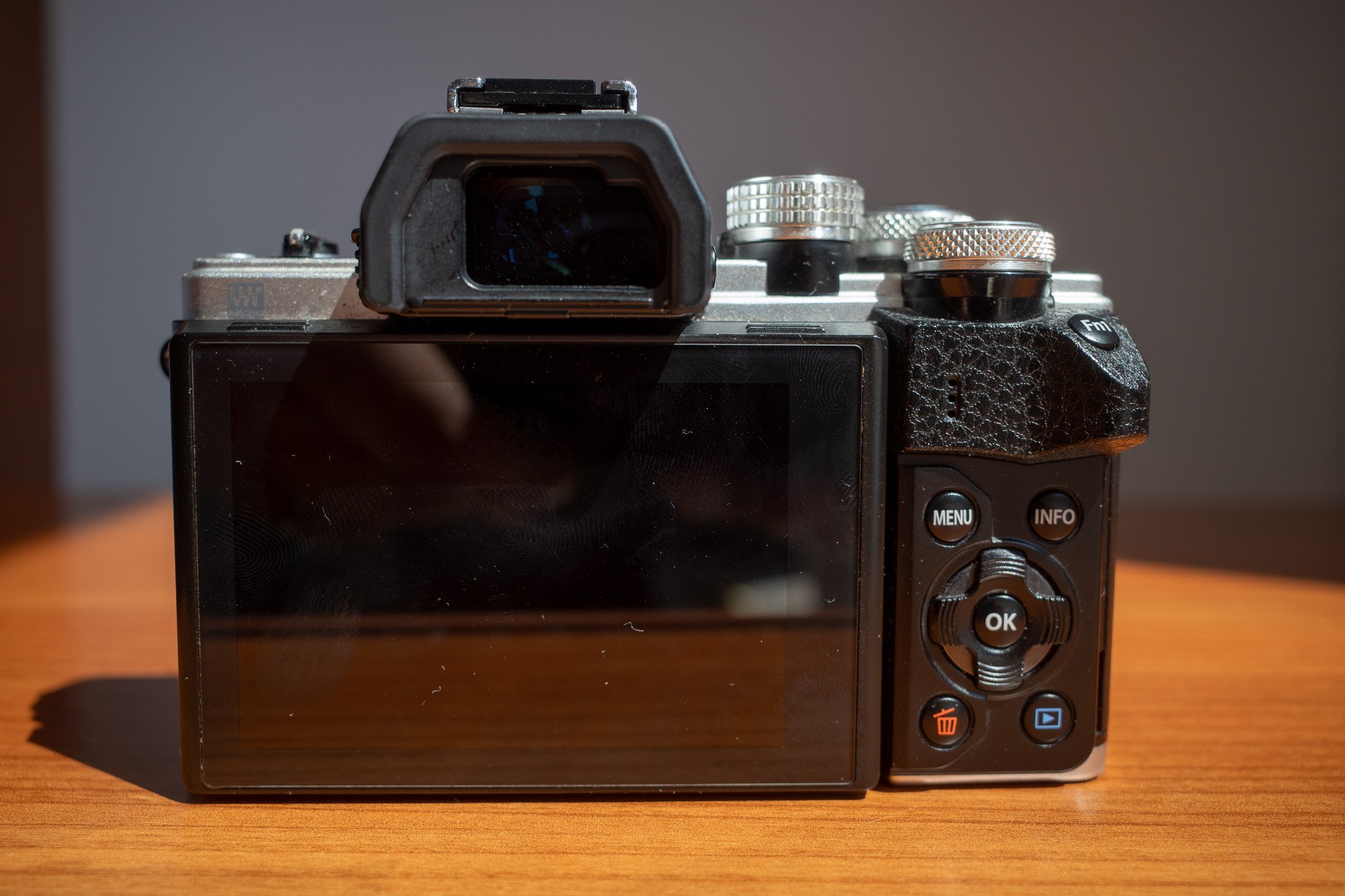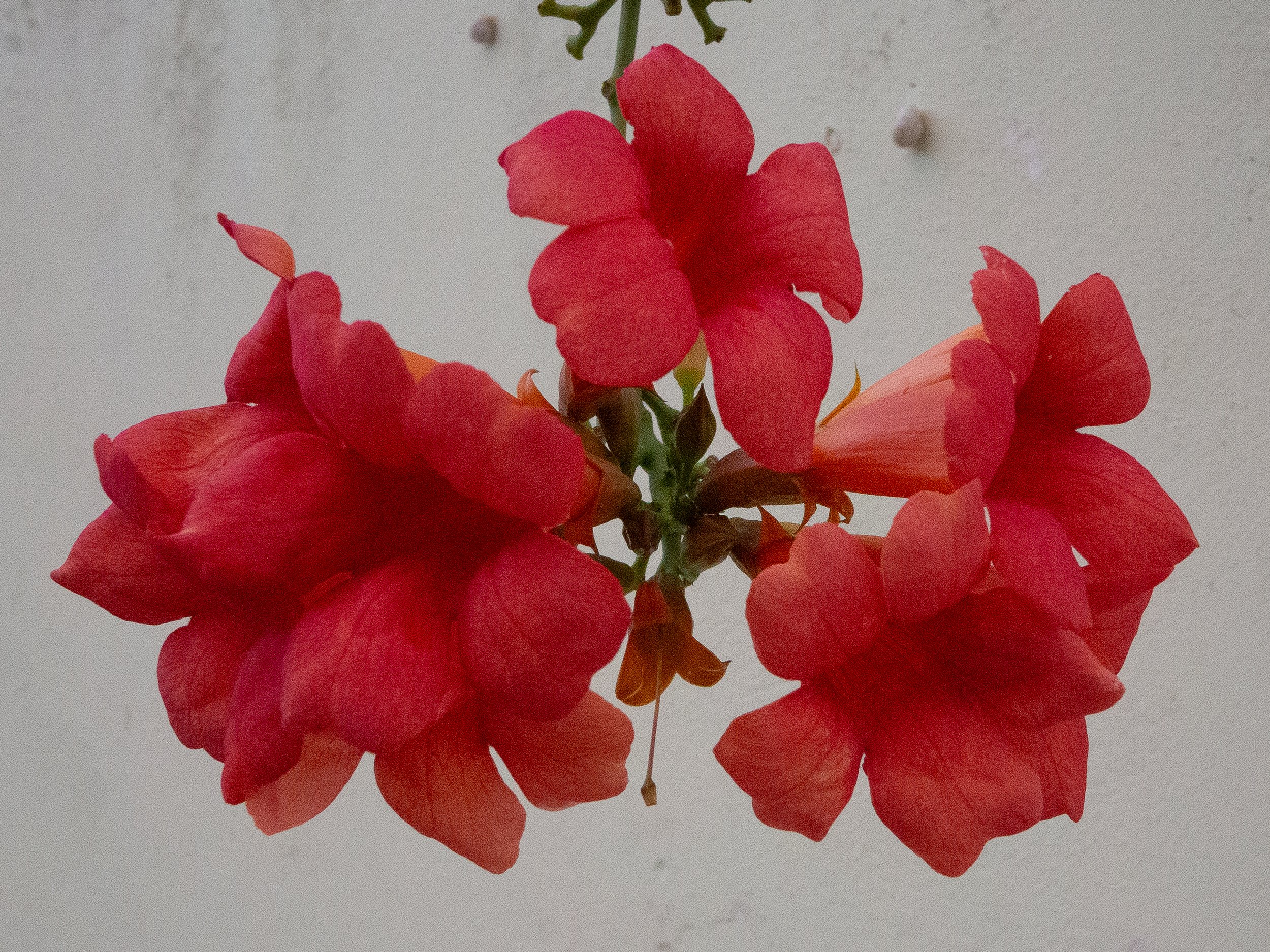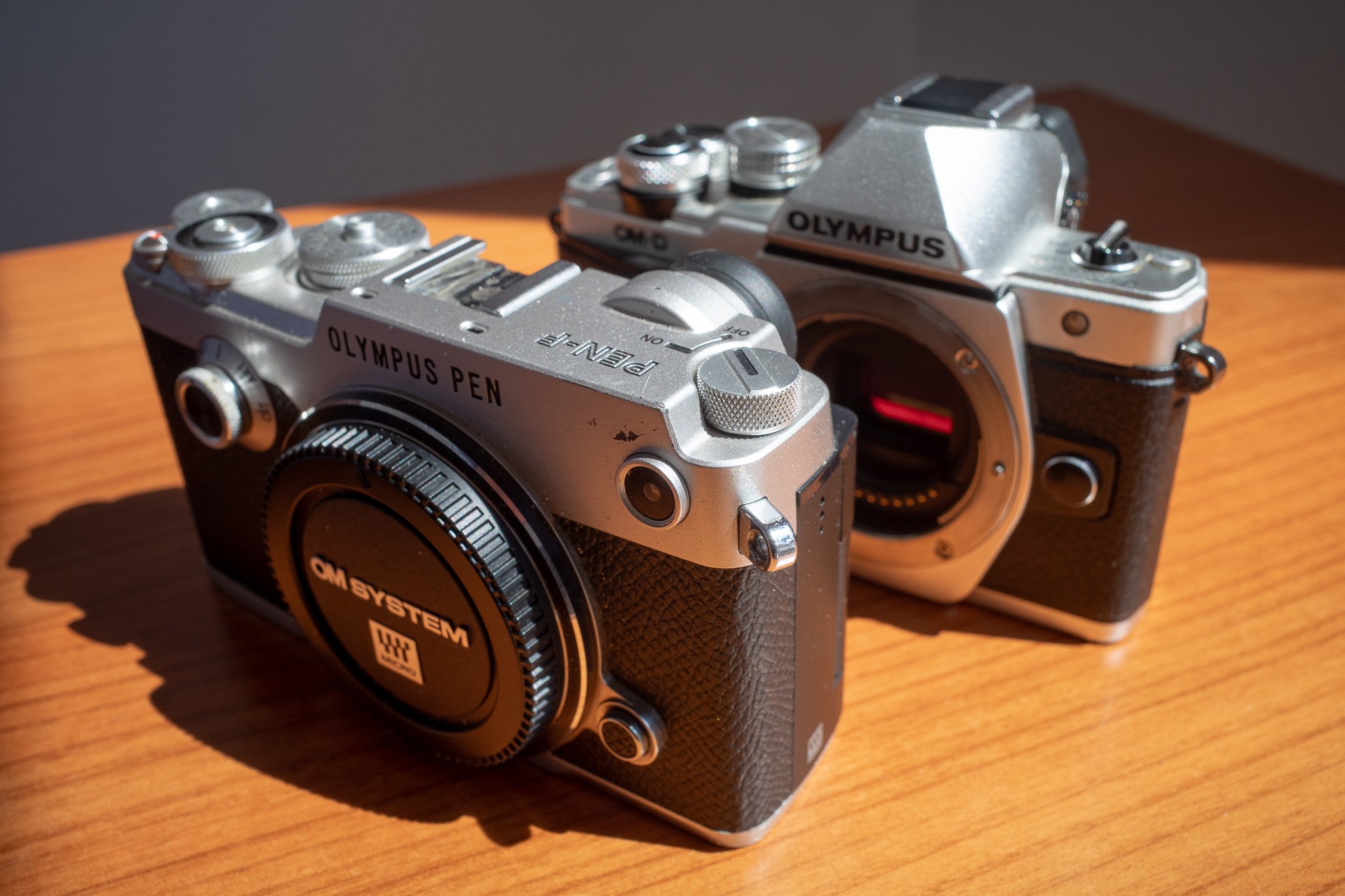Olympus E-M10 Mark ii Review in 2024 - The Value King
Buying an Olympus e-m10 mark ii in 2024 or 2025
I’ve been an Olympus e-m1 mark ii owner for a long time, but I’ve been looking for a small EDC (every day carry) camera for a while now. I’ve tried several options, including my beloved Ricoh GR III, the Sony rx100 vii, the Sigma FP, and a Sony a7s (the original). All of those cameras are great in their own way, but they all have flaws that keep them from being THE ONE for me! So, in my constant exploration for the perfect compact camera, I picked up another Olympus, the Olympus e-m10 mark ii.
My arrival at the e-m10 mark ii comes after my maturation out of caring too much about sensor size, resolution, and specs in general.
*Many of the links in this article are affiliate links. When you purchase through the links, you don’t pay anything extra but I get a small commission to keep this website running.
Olympus e-m10 mark ii Key Features
16 megapixel micro four thirds (m4/3) sensor.
5-axis image stabilization
Contrast Detect Autofocus
2.36 million dot viewfinder
Tilt-screen (not fully-articulating)
Metal body and excellent build
Built in Flash (which I never use lol).
390 grams
E-M10 mark ii still worth buying in 2024?
Disclaimer - or lack thereof
*I am not an Olympus/OM System ambassador, so I have no reason to promote this camera beyond my own personal experiences with it. I have never had any commercial relationship with Olympus, OM System, or any other micro four thirds manufacturer.
Used Price in 2024 and 2025
Let me first say, the e-m10 mark ii is a great all around camera. For the price, it is one of the most complete packages you can buy on a budget, and also one of the most compact. I’ve seen the e-m10 mark ii hovering consistently around $250 on the used market (ebay mostly). I bought mine for 240 euros on Facebook Marketplace. At this price I consider it a bargain, especially considering the compact camera market has seen mad inflation lately, with the Fujifilm x100vi seemingly driving the hype.
Build Quality
The build quality is that of the Olympus golden days. The top and bottom plate are metal (Olympus used plastic in the e-m10 mark iii), the dials are robust and without play, and the screen feels far from flimsy. This is a really well built camera, and getting it in my hands was really refreshing especially now that many camera manufacturers are choosing to build out of plastic.
For once in my life, I wish it had a locking mechanism on the mode dial. I’ve accidently knocked it several time (not really a big deal). It is much easier to turn than on my e-m1 mark ii.
Image Quality
Resolution
I used to be obsessed with higher megapixel cameras, but after 1,000s of photos, I’ve learned resolution doesn’t need to be my first priority. The Olympus e-m10 mark ii has 16 megapixels and I’ve been very satisfied with the resolution. I think 90% of photographers can be happy with16mp, but many are afraid to try these older cameras because the marketing departments at large camera brands have them convinced their photos will look like trash if they’re anything less than 24mp. As a previous Sony a7r ii shooter (42mp), the move down to 16mp really doesn’t feel as drastic as it looks on a spec sheet. 16mp is enough to crop and the files sizes are much easier to store and transfer from your camera.
20 megapixels has been the standard in micro four thirds cameras for years. The 16 megapixels on the e-m10 mark ii is very comparable and hardly distinguishable. Don’t spend double or triple the money because you’re worried about a 4 megapixel difference.
Pigeons in Athens
Street art in Athens, Greece
Dynamic Range
One of the things I miss about shooting full-frame cameras is the wide dynamic range, but my little e-m10 mark ii is no slouch. I was in Athens, Greece the other day and I accidently bumped one of the camera dials and severely overexposed a photo of pigeons. When I pulled the photo up in Lightroom I had no hope of saving it. I was shocked how much detail was present when I pulled the highlights bar all the way to the left and a savable file was revealed.
At least in terms of highlight retention, my Olympus e-m10 mark ii is as good, if not better, than some full-frame cameras I’ve used, especially cameras that utilize electronic shutters.
Severely overexposed image from the Olympus e-m10 mark ii
The image was saved after a quick exposure adjustment in Adobe Lightroom
ISO Performance in Low Light - Is this a Night Photography Camera?
Most people familiar with camera technology will know that m4/3 (Micro Four Thirds) sensors are smaller than full-frame, and generally perform poorer in low light conditions. That isn’t to say they perform badly, just not as well (all other things being equal).
I took the Olympus e-m10 mark ii out at dusk to do some high ISO testing and took images at ISO 1600 and ISO 6400. I’ve included a few sample photos below.
ISO 1600 full image
ISO 1600 cropped image
ISO 1600 full image
ISO 1600 cropped image
*Just so you know, no noise reduction has been applied to these images.
Tolerance for noise and grain is subjective, so I can only give my personal opinion. To my eye, ISO 1600 has very tolerable noise levels. The images retain good color information and depth. I have no problem photographing at ISO 1600 on this camera.
Now lets have at some sample photos taken at ISO 6400.
ISO 6400 full image
ISO 6400 cropped image
ISO 6400 full image
ISO 6400 cropped image
Personally, I’m not going to use the e-m10 mark ii at ISO 6400. The photos have significant noise and appear flat from losing color information. The pictures are certainly tolerable, but they don’t look great in my opinion.
To sum up my thoughts on the Olympus e-m10 mark ii’s ISO performance, I am happy to use this camera up to ISO 3200.
Remember, ISO doesn’t tell the complete story when it comes to low light photography. The e-m10 mark ii has IBIS (in body stabilization), which allows the photographer to use longer shutter speeds in certain situations. Keeping the shutter speed slow keeps ISO down, so don’t judge this camera’s ISO performance to harshly without considering its ability to compensate with IBIS.
Overall Image Quality Thoughts and Opinions
I’ve been very pleased with the image quality from the e-m10 mark ii. I am completely happy taking this camera out for a day of casual shooting and leaving my full frame cameras behind. This camera performs perfectly in all normal conditions. The only time I might reach for a full-frame over the e-m10 mark ii is if I knew I would be shooting in extreme low-light (which is very rare for me).
I said it before but it’s worth repeating, the image quality from the Olympus e-m10 mark ii is good enough for 90% of photographers 90% of the time. Unless you know you’ll be photographing regularly in super challenging conditions, don’t write-off the e-m10 mark ii. I’ve been photographing for years, and this Olympus sensor is still very comparable to more modern offerings.
Vlore, Albania
Old Red Mercedes Bus
Auto-Focus, Is It Any Good?
Single Point Auto-Focus
This is an easy one for me because I shoot all my cameras almost exclusively in single point auto-focus mode (when I’m not focusing manually). The Olympus e-m10 mark ii is as good as any modern camera when single point focusing, with the exception of maybe the newest Sony cameras. It is faster than my Ricoh GR III and as fast as my Sigma FP. If you use single-point auto-focus, you will not be disappointed.
Continuous Auto-Focus
The e-m10 mark ii has a contrast-detect system (no phase-detect), so continuous autofocus isn’t on par with modern cameras. That said, from my limited testing, I’ve had no problem getting the auto-focus to hit when taking simple videos and capturing memories. Its miles ahead of my Ricoh GR III and my Sigma FP even in 2024.
I don’t photograph birds in flight or race cars, but I don’t imagine too many people considering this cameras are planning to use it for those purposes.
Street Art in Athens, Greece
Art in Athens, Greece
Battery Life - Not too Shabby
I’ve heard many people complain about the battery life on the Olympus e-m10 ii, but I’ve personally been rather impressed. The camera is small, and to keep it that way, Olympus didn’t have the option to include a gigantic battery. Many of those complaining this camera doesn’t have a 1,000 shot CIPA rating are just unrealistic.
I have no problem using this camera for several days on a single charge. I don’t shoot loads of video or shoot in continual burst mode very often. More demanding users may need to look elsewhere, but overall the battery is good and the complaints are unjustified (in my opinion).
In 2024, spare batteries are cheap and easy to find. If you need some extras, you can find them on here.
Video Quality - Probably the Biggest Weakness
As a photographic machine, this camera is excellent. As a video machine, this camera is just OK. Whether or not the Olympus e-m10 mark ii is a good video camera is somewhat subjective based on an individual’s needs.
If you want a simple camera that produces nice 1080p video up to 60fps and you prefer smaller file sizes, this camera will be perfect for you. The video is good enough for preserving memories and capturing beauty. The 1080p isn’t the sharpest in the world, but it’s far from rubbish (see the video sample below). I’ve also found these files to be easy on my editing software (Adobe Premiere).
If you want top end, ultra crisp, 4k recording, you’ll need to look elsewhere (but you probably already knew that).
E-M10 mark II as a Monochrome Camera
My interest in using the em-10 mark II as a monochrome camera came after shooting black and white images with my Olympus e-m1 mark II. I really enjoy the monochrome picture profile on my e-m1, but it’s a bit large to use as a take everywhere camera. I also wanted a camera with a tilt screen, as I find it ideal for stills photography and behind-the-camera videography.
I’ve been shooting with my e-m10 mark II for about a month now and I’ve been very happy with the results. The camera uses an older 16mp sensor, but I’ve been pleasantly surprised by its resolving power. 16mp really is enough for most uses.
The black and white picture profile is at least as good as the one on my e-m1, I actually think i like it a little better. I don’t know if that is due to the sensor or the profile itself. I generally keep the contrast high and the highlights toned down.
The photo examples in this article are all straight-out-of-camera JPEG files and I’ve not adjusted the images in post. The images were taken using two budget lenses, the Panasonic Lumix 14mm f/2.5 and the Panasonic Lumix 12-60 f/3.5-5.6. Even with budget lenses, the images have nice tonality and suit my preferences. I hope these images give you a good idea of what you can expect from this delightful little machine.
Grass Tennis Court
National Archeological Museum in Athens, Greece
Buy the E-M10 mark II Instead of the Olympus Pen-F… Seriously!
The Olympus e-m10 series has always been seen as the budget line of the Olympus or OM System lineup. On the premium end, originally retailing for around $1200 USD, was the Olympus Pen-F. There was only one version of the Pen-F which launched in 2016. The camera remains popular amongst micro four thirds lovers, and it’s price remains high. At the time of writing this review, a Pen-F in good condition will cost you $800 on the used market.
I currently own both cameras, and I enjoy them both, but I haven’t picked up the Pen-F since getting the e-m10 mark ii. The cameras are very similar in many ways, excellent build, excellent image quality, EVFs, IBIS, etc… You do get an additional 4 megapixels and an articulating screen with the Pen-F, but the 4 megapixels aren’t significant enough for me and I prefer a tilt-screen. Perhaps the most compelling reason to buy the Pen-F is the JPEG customization options, but as a RAW shooter, the Pen-F’s color wheel isn’t super compelling to me.
One thing I love about the e-m10 mark ii is that I don’t have to treat it like an $800 camera. I take it everywhere without worrying about damaging it and having to sell a kidney to get another one. They are 1/3 the price of the Pen-F and plentiful on the market.
If you’re someone who can’t quite stomach the price of the Pen-F in 2024 or 2025, I would highly encourage you to consider the Olympus e-m10 mark ii. I don’t think you’ll be disappointed.
Conclusion and Recommendation
Overall, I’m very pleased with my e-m10 mark II as an everyday carry camera. I can whole-heartedly recommend it to someone looking for a compact camera. You will find very few competitors offering a compact body, IBIS, EVF, interchangeable lenses, great build quality, and at a great price.
I suspect prices for this camera will rise in the next few months, so pick one up while they are still cheap. Finding one in good used condition for under $250 is a steal.
Alternatives to the Olympus e-m10 ii:
Below, I’ve listed a few micro four third alternatives to the Olympus e-m10 mark ii. Keep in mind, there are many APS-C options available as well, but they’ll probably cost you a bit more.
Lumix GX85 - Panasonics rangefinder style camera. Slightly more expensive but beloved by owners.
Olympus e-m5 mark ii - This camera also features IBIS and an EVF, however it has a fully articulating screen instead of a tilt screen.
Olympus e-m1 (original) - If you’re ok with a slightly larger camera, the original Olympus e-m1 is selling on the used market for dirt cheap. I bought one the other day for $180 USD.
Additional Reading on the e-m10 ii:
DP Review… Here
Camera Labs… Here































































